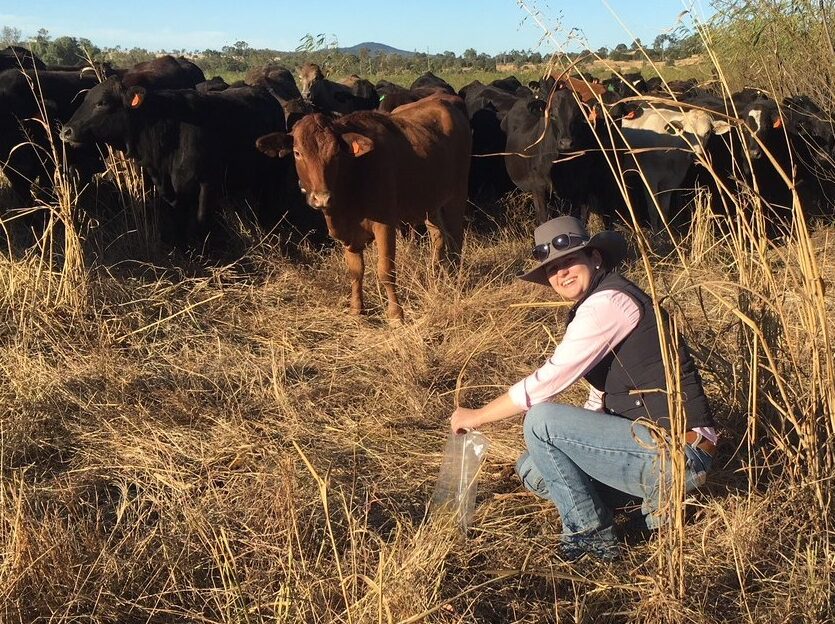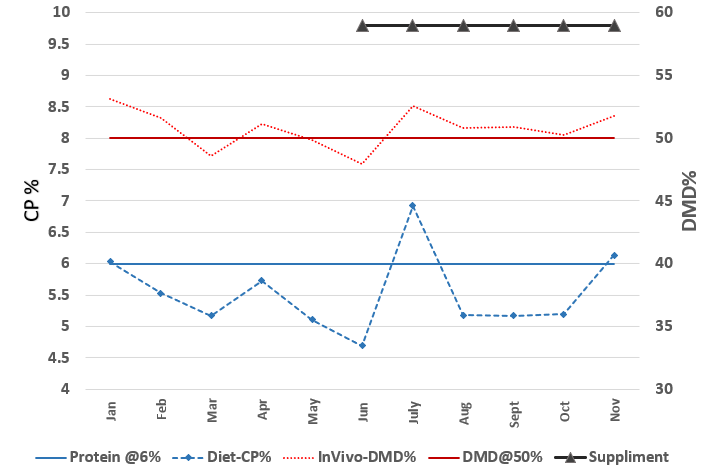Dry Season decisions — when to supplement?
 With the temperatures dropping and rainfall stopping, do you know the nutritional value of your pastures?
With the temperatures dropping and rainfall stopping, do you know the nutritional value of your pastures?
Would you be confident to make decisions about the nutrition of your cattle herd?
When nutritional quality is declining, there is one simple way to accurately capture the diet quality of your paddocks. This involves collecting cow pats and testing your dung using faecal NIRS (Near Infrared Reflectance Spectrophotometry).
Sounds complicated, right? Wrong.
This method is a quick, inexpensive and reliable predictor of the diet quality of your pastures and will enable you to understand the nutritional gaps in your herd, long before they begin to lose body condition. Meaning, you can make proactive and timely management decisions.
So what information does FNIRS actually give you?
There is a lot that your cattle dung can tell you! This method of analysis will give you predictions on:
- dietary crude protein (first nutrient to limit production when pastures dry off)
- dry matter digestibility (strongly correlated with energy available to the animal)
- faecal nitrogen concentration (indicates protein status of animal)
- dietary non-grass proportion (captures browse and herbage)
- digestibility/protein ratio (will your cattle respond to urea?)
- phosphorus status (important for everything production!)
All of these attributes are critical to ensuring your cattle have the optimal nutrition to meet your production goals of gaining weight, conceiving and raising a calf.
When you receive your report back it is important to interpret your results with consideration to the nutritional requirements of each class of cattle.
At Brian Pastures Research Facility (Gayndah), FNIRS is used multiple times a year to make timely decisions on when to start, and when to change, the type of supplementation used. At the end of the growing season (usually in May) samples are taken to determine whether urea supplementation is required to counteract the decline in crude protein in pastures. As the season progresses, samples are taken to determine if the current supplement is meeting the animals requirements, and decide whether to switch over to an energy-based supplement, such as M8U (molasses with 8% Urea).
These decisions should not be made solely on visual assessment of cattle, or from a single FNIRS analysis. By the time you notice a decline in cattle body condition, and/or a decline in pasture quality, the nutritional gap is already having an impact. A good example of this is from the 2019 season at Brian Pastures, when supplementation of the cow herd did not begin until June. Faecal samples were taken monthly, but only sent for analysis every three months. When we look at figure 1 below, we can see that the dietary crude protein (blue dashed line) was below maintenance levels (blue solid line) since January.

A delay in supplementation such as this has a huge effect upon herd production in terms of weight gain and re-conception. In this case, a more frequent strategy in monitoring diet quality would have prevented such an impact.
If you would like more information on how you can implement FNIRS into your grazing system, and how to interpret results and select the appropriate supplementation, the Beef Extension team have you covered. You can visit the Future Beef website or contact your local extension officer.